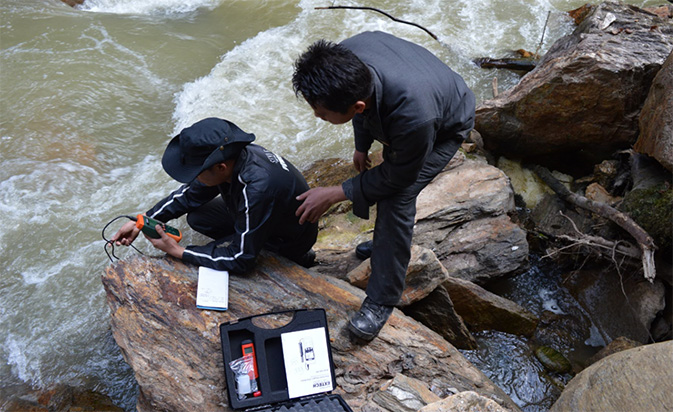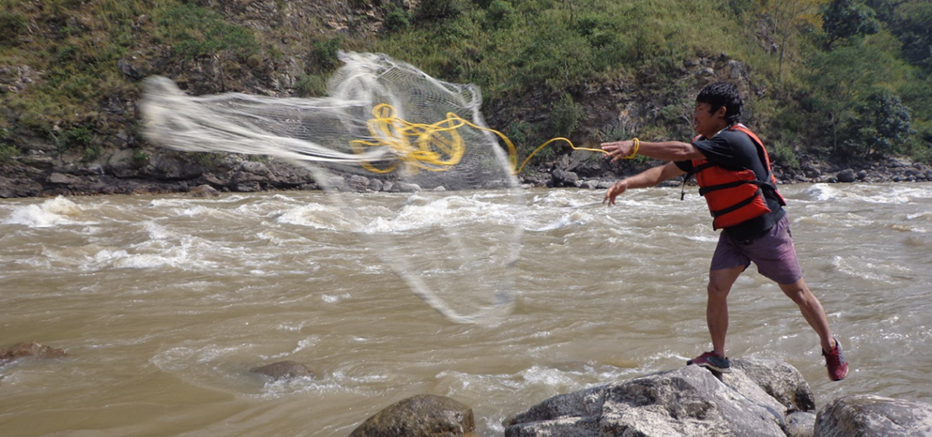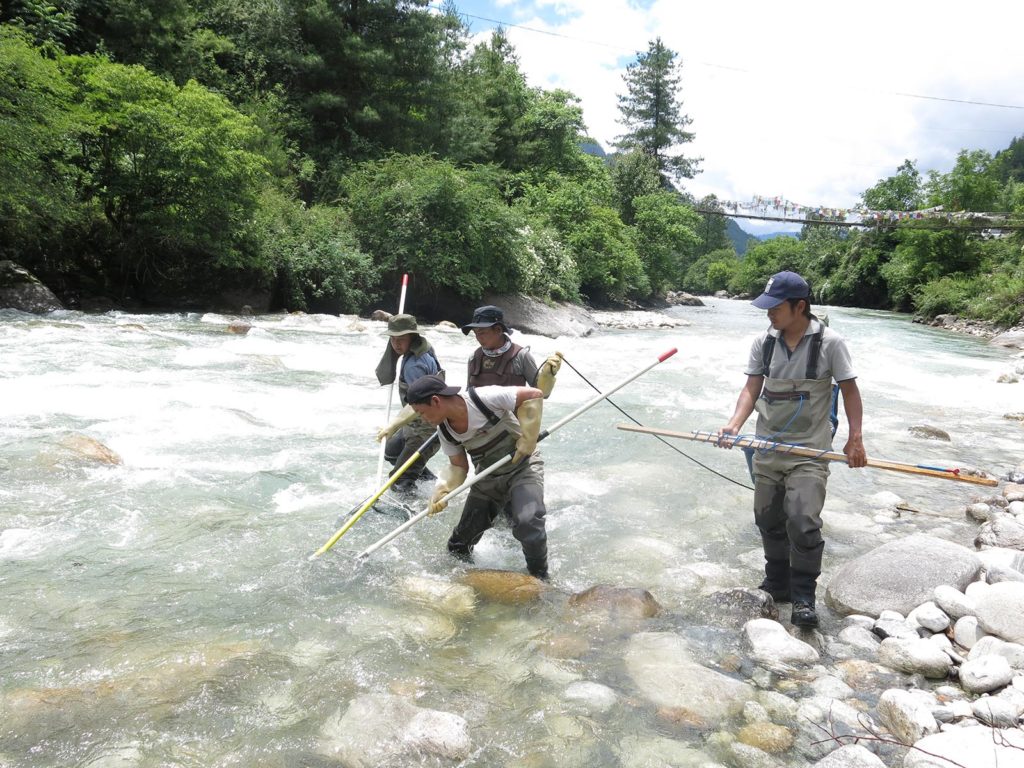
INTRODUCTION
The Fisheries Ecology and Environment Unit of the National Research Centre for Riverine and Lake Fisheries (NRCR&LF), Haa under the Department of Livestock (DoL) is responsible for works and researches related to fishery ecology and environment such as:
- Establishment of reference line data and conduct monitoring program for hydropower affected water bodies.
- Development of management plan and mitigation measures for conservation of fisheries in water bodies which are affected by anthropogenic activities.
- Limnology study in various water bodies such as rivers, lakes and important fishery habitat such as marshlands.


CURRENT ACTIVITIES
In order to develop conservation and management plan for fisheries to mitigate the impacts, the unit is providing technical services to the following hydropower projects:
- Punatshangchhu Hydroelectric Project Authority Project (PHPA), the developer of 1200 MW Punatshangchhu Hydropower Project I and 1020 MW Punatshangchhu Hydropower Project II at Punatshangchhu river, Wangdue Phordang.
- Tangsibji Hydro Energy Limited (THyE), developer of 118 MW Nikachhu Hydropower Project at Nikachhu river, Trongsa.
The NRCR&LF, on behalf of DoL is technical advisory body to the National Environment Commission (NEC) for fisheries in relation to environment flow (e-flow) studies to develop the e-flow guidelines for the HEP’s. The fisheries ecology and environment unit are engaged with NEC for the same purpose.
The unit also provide technical support to other developmental activities which is likely to have impact on fisheries.

FISHERY RESOURCES AND THREATS
Bhutan is endowed with rich perennial water resources which are the most important natural resources of the country. The inland water bodies which comprise of rivers, streams, lakes and marshlands supports various forms of aquatic life. The aquatic biodiversity of Bhutan is poorly studied and is highly vulnerable to threats from anthropogenic activities. Lately, several institutions particularly the NRCR&LF, Haa are actively engaged in studying the aquatic resources, mainly the fishes. As of now 123 species of fishes has been reported from Bhutan.
The threats to the aquatic resources of Bhutan, particularly the fishes are as follows:
- Hydropower Sector: Hydropower is the most important revenue generating sector in Bhutan. The dams and diversion weirs of hydropower project obstructs migration of fishes between various habitats. They also bring about changes in physical and chemical aspects of aquatic ecosystem.
- Illegal Fishing: Illegal fishing is predominant across most parts of country. This will have impact on wild fisheries on long run as the species, size and developmental stages of fishes are neglected by fisherman.
- Invasive Aquatic Species of Fishes (IAF): Bhutan’s fishery resources are highly vulnerable to exotic fishes which are known to change the local ecosystem and its function and thereby leading to extinction of indigenous species.
FUTURE PLANS
In order to further strengthen fisheries conservation programs in Bhutan through adequate research in field of fisheries ecology and environment, the unit have the followings plans for the 12th FYP period.
- Evaluate the effectiveness of fishway(s) in hydroelectric structures.
- Study the establishment and impacts of exotic and invasive alien species (IAS) of fish in rivers of Bhutan.
- Assessment of stock abundance and species diversity of fish in undisturbed river(s).
- Initiate the limnological study in important lake(s).
- Zonation of river system in accordance to fish as an indicator.
- Initiate reference line study for assessment of snow trout migration.
- Collaboration with international, regional and national institutions engaged with aquatic biodiversity conservation and management.
FACILITIES PLANNED
The followings are the facilities which are planned during the 12th FYP for execution of fisheries ecological studies with more advanced approach.
- Fisheries Ecological Laboratory.
- Water Quality Testing Laboratory.

